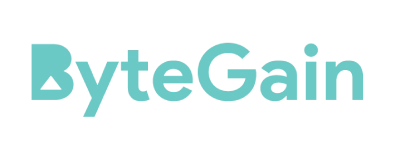Teachable is a simple, reliable teaching platform for online company owners and people interested in starting their own online school and offering courses. Your learners will have no issue accessing and navigating your courses since the interface is simple.
Teachable isn’t a learning management system designed for your company’s internal training or external training requirements. A learning management system of this sort will be expensive, but Teachable is reasonably priced and offers features oriented toward course creation and marketing.
Its strength, in my perspective, is video-driven content. Teachable also excels when it comes to basic features that aid in the sale of your first online course, such as its customizable sales, checkout, and thank you pages.
It’s also worth mentioning that Teachable is one of, if not the largest, platform providers in its category. Given the vast number of organizations that have rushed in to attempt to market online course systems, this is a crucial point to make. Within a few years, many of them will be gone. Teachable, I don’t believe, will.

Teachable is a difficult platform to match for anybody searching for a reliable, uncomplicated platform to build and sell online courses.
If you to get into more details about Teachable check our detailed Teachable review here.
But in this article, we will go into the details on the how-to price your online course in Teachable.
So, let’s get started.
How To Price Your Online Course In Teachable
It’s a frequent yet challenging topic for creators: “How much should I charge for my online course?” Understanding how to price an online course and placing a value on your information does not have to be difficult.
However, by considering yourself, your course, and the effort you put into developing your company, you’ll be able to set a reasonable price that your audience will gladly pay.
Premium Pricing Is Unquestionably More
Would you trust teachable if they told you it’s as simple as this: Charging less equals earning less money. Premium pricing will benefit you in the long term and comes with several advantages.
Continue charging more.
- Your income targets will become more attainable. Selling a course at a cheap price needs you to enroll more students in order to meet your revenue goal—which means you’ll spend more time obtaining new customers. If you charge a greater fee, you’ll be able to accomplish your objectives more quickly and efficiently.
- A smaller group size results in a more enjoyable learning experience. If you just have to deal with 15 students rather than 50, those students will get more of your undivided attention. This is an excellent way to ensure recurring business and prospective recommendations for your firm.
- Premium pricing boosts engagement and effectively conveys value. By charging a premium for your course or coaching session, you guarantee that students see their purchase as an investment – one they expect to see a return on.
- Secure—and screen out—students. If you price your course too cheap, you’re likely to attract students who aren’t exactly your target demographic and will likely abandon the course or never buy again. Those who succeed and get the most benefit from your services will gladly pay a premium and are therefore more inclined to make a repeat purchase.
How much should you charge?
How much may your online courses truly cost? It’s entirely up to you, but having some pre-pricing information may be invaluable.
Start by…
1. Creating income objectives
Prior to anything else, you should establish revenue targets for your online course. Whatever objective you have for your firm, establish a target number.
In reality:
Assume you want to earn $5,000 from your online course. Keeping this in mind, if you maintain a $100 pricing point, you will need to sell 50 copies of your course to meet your objective.
However, what if you decide to charge $250 for your course? In such a situation, you simply need to enlist twenty persons. Furthermore, if your online course is priced at $500, you just need to sell to ten individuals. Have you noticed where we’re going?
By establishing these targets, you may have a better understanding of how many individuals you need to sell to in order to consider your launch successful.
2. Determine the number of persons who are likely to purchase your course.
In general, you may estimate that at least 2% of your email list will make a purchase, which is a good starting point.
In reality:
If you have 1,000 subscribers, around 20% will make a purchase. If you want to earn $4,000, you must sell at least $200 worth of your course.
3. Make an irresistible offer to them.
Now that you know how to price your course and, more significantly, why you should strive for premium pricing, seal the deal for your students with an offer they won’t be able to refuse.
4. Include layers of pricing.
Pricing levels make your course more accessible to a wider range of students, even those who aren’t interested in all of the extras you’re giving.
Decide which pieces of bonus content you want to provide initially when creating your price tiers. Consider which ones make the most sense for your target market and will provide the most return on investment.
Decide how much each item is worth once you’ve chosen your supplementary material.
5. Offer payment options
While not every student will be able to pay in one big sum, smaller payments spread out over a few months maybe more doable. In addition, plans that are paid out over time often have larger price tags.
If you want to save on Teachable, check out Teachable Coupon Codes.
Quick Links:




